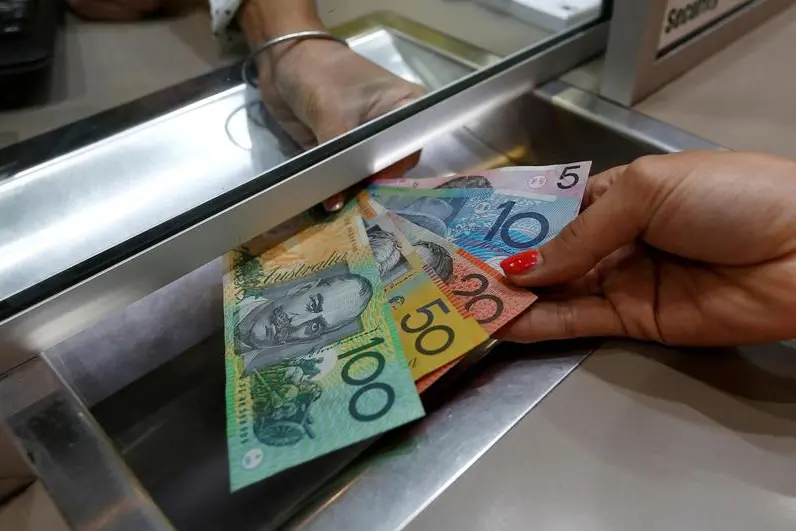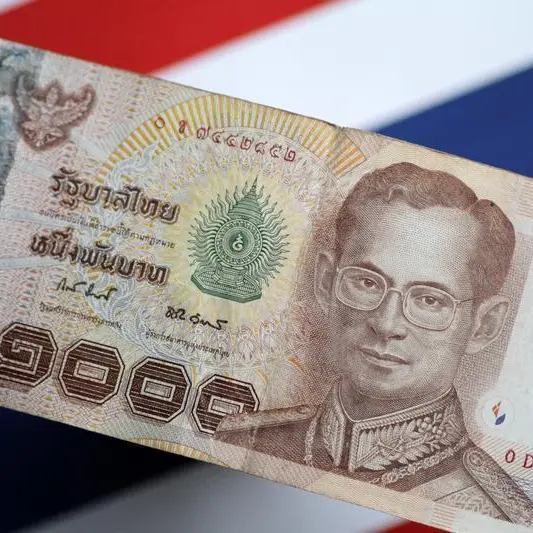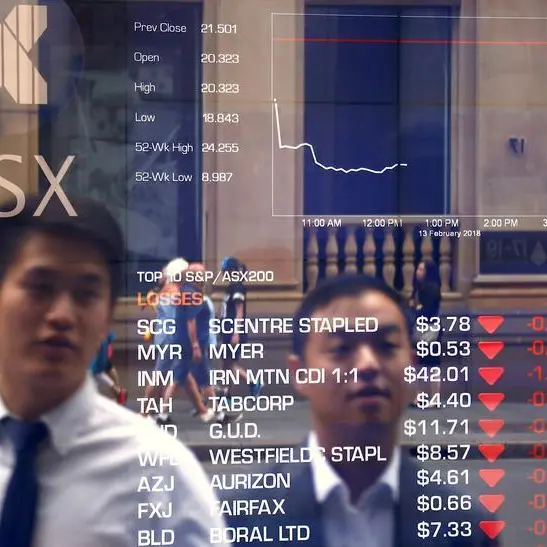PHOTO
The Australian and New Zealand dollars stood near their 4-1/2 month highs on Friday, drawing partial support from Chinese data showing some improvement in the economy, while bonds retained their gains on monetary easing hopes abroad and at home.
The Aussie rose 0.4% to $0.6723, after jumping 0.6% overnight to $0.6728, its strongest level since July 31. It is headed for a weekly gain of 2.1% and next major resistance lies at $0.6820.
Chinese data on Friday showed the factory and retail sector sped up in November, but some indicators missed expectations.
The kiwi dollar was 0.2% higher at $0.6217, having risen 0.5% overnight. It is up 1.5% for the week, held back a little by expectations that the unexpected contraction in the economy will usher in aggressive rate cuts from its central bank next year.
Swaps are pricing in the Reserve Bank of New Zealand won't have to follow up with its threat to hike any more but could deliver an almost 100 basis points of easing next year given the weakness in the economy.
"The kiwi is flailing on most major crosses, reflecting the combination of a USD slump on the back of the Fed's full pivot, and NZ-specific weakness following yesterday's soft GDP numbers," said Andre Castaing, an economist at ANZ.
"Diverging NZ/AU data, policy expectations, and fiscal outlooks are painting a very negative backdrop for this cross (NZD/AUD) over the summer."
The kiwi was fetching A$0.9252, about the lowest level in two weeks.
New Zealand's 10-year government bond yields slid 30 basis points this week, the biggest drop since October 2022, to 4.642%. The two-year swap rate dived 38 basis points this week to 4.8050%, the most in 13 years.
In Australia, three-year yields were down 12 basis points this week to 3.791%, the lowest since mid-September and well under the 4.35% cash rate.
Ten-year yields slid 17 bps this week to 4.146%.
(Reporting by Stella Qiu Editing by Shri Navaratnam)












